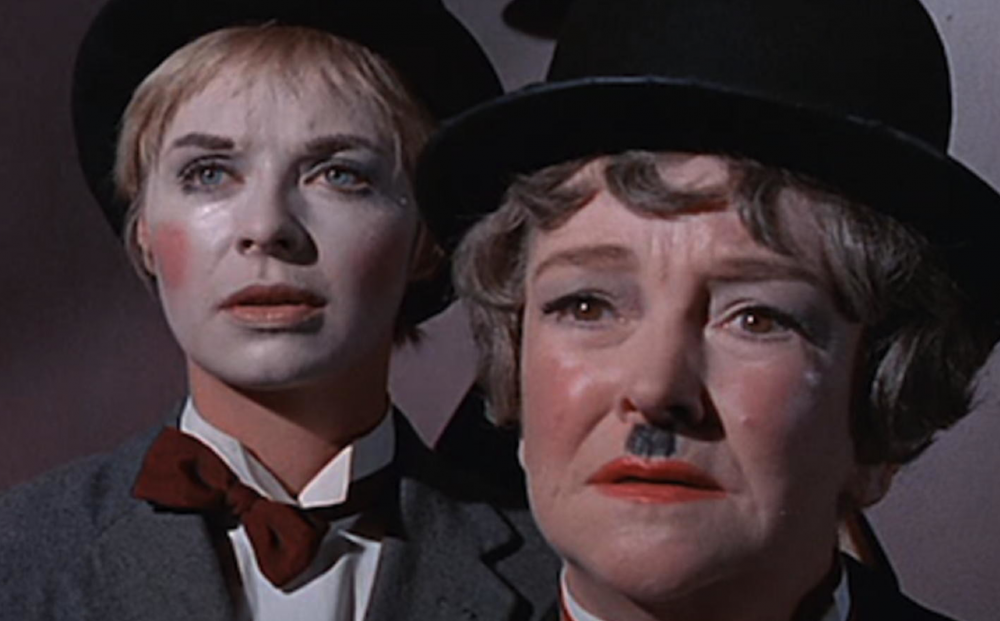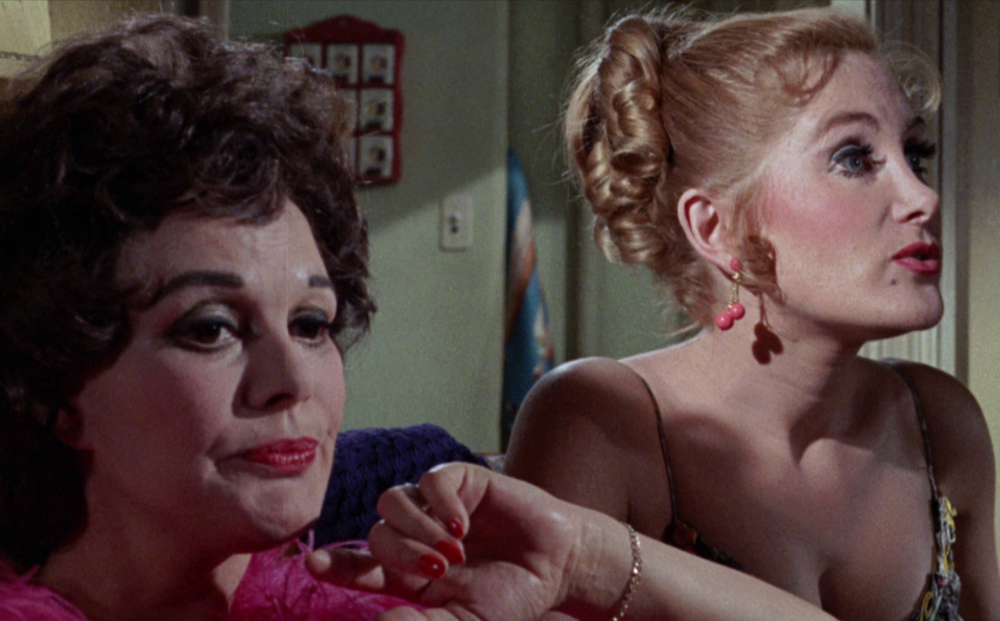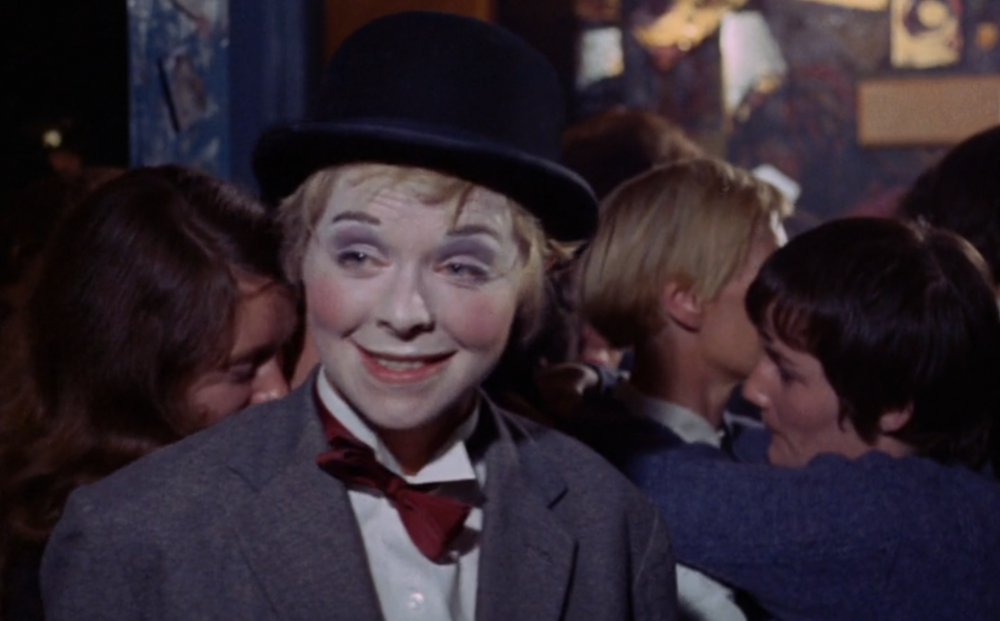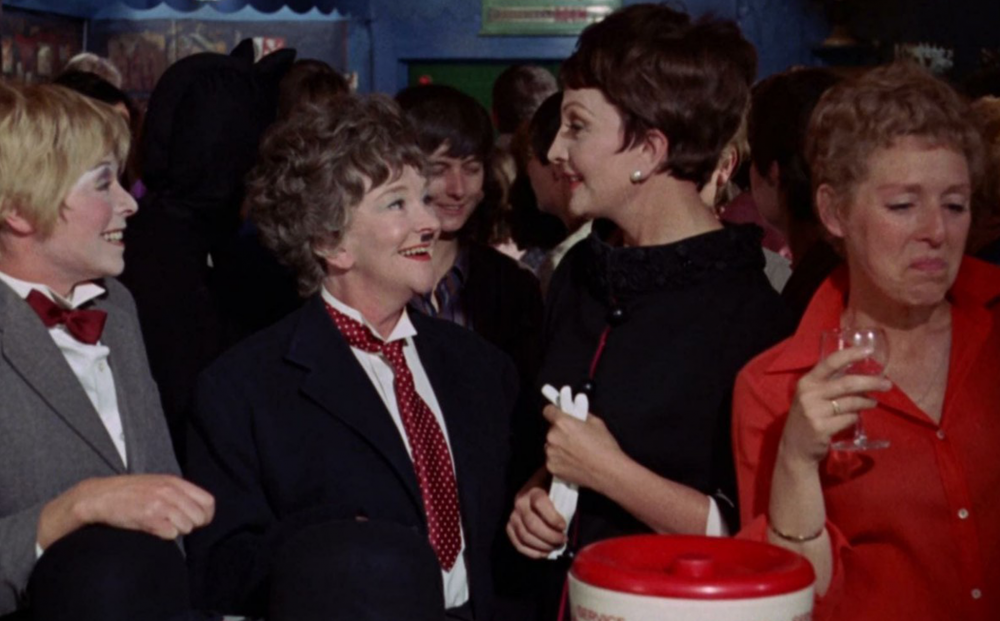THE KILLING OF SISTER GEORGE
U.S., 1968
Directed by Robert Aldrich
With Beryl Reid, Susannah York, Coral Browne
Based on the 1964 play by British playwright Frank Marcus
Approx. 138 min. DCP.
“Not all girls are raving bloody lesbians, you know!” “That’s a misfortune of which I’m perfectly well aware.” Robert Aldrich’s X-rated THE KILLING OF SISTER GEORGE, the notorious adaptation of the West End stage hit, centers a bizarre love triangle between aging alcoholic and faltering actress Beryl Reid who plays “George” in the BBC soap Applehurst, her doll-obsessed younger girlfriend Susannah York, and smooth operator TV executive Coral Browne. At turns funny, charming, and horrifying, the film features an unforgettable scene in a (now-defunct) real lesbian bar where Reid and York perform as Laurel and Hardy.
Reviews
“Tour de force bitchiness and hysteria, like an installment in the WHATEVER HAPPENED TO BABY JANE? saga.”
– Time Out (London)
“Aldrich’s film endures not because it’s an example of bad, pre-Stonewall homo images but because of its sly way of celebrating dykes. Though she has lost both her girlfriend and her job, George is the only character who has not compromised herself or exploited others. SISTER GEORGE may be the first movie in which an alcoholic, unrepentant butch who molests nuns is redeemed by her unwavering commitment to her sexuality.”
– Melissa Anderson, Film Comment
“Placed alongside Aldrich’s other films about women, SISTER GEORGE is clearly the odd man out. Like the others, it details a power struggle among women, each in her own way doubled and duplicitous…But it’s at once more ghastly and more realistic than the others—emphatically gayer, yet rather less campy—involving women who are hysterical, but not quite murderously psychotic. Melodrama, slapstick, romance, exploitation, and psychological horror all vie for dominance throughout the film…”
– Leo Goldsmith, Reverse Shot
“But there is a scene between Coral Browne (the gossip columnist in “Lylah Clare”), playing a villainous lesbian studio executive, and Miss York’s left breast, which sets a special kind of low in the treatment of sex—any kind of sex—in the movies now. Miss York, whenever her face is in view, looks embarrassed. Miss Brown approaches the breast with a kind of scholarly interest, like an ichthyologist finding something ambivalent that has drifted up on the beach. The scene goes on for ages ... It is the longest, most unerotic, cash-conscious scene between a person and a breast there has ever been on screen, and outside a surgeon’s office.”
– Renata Adler, The New York Times





